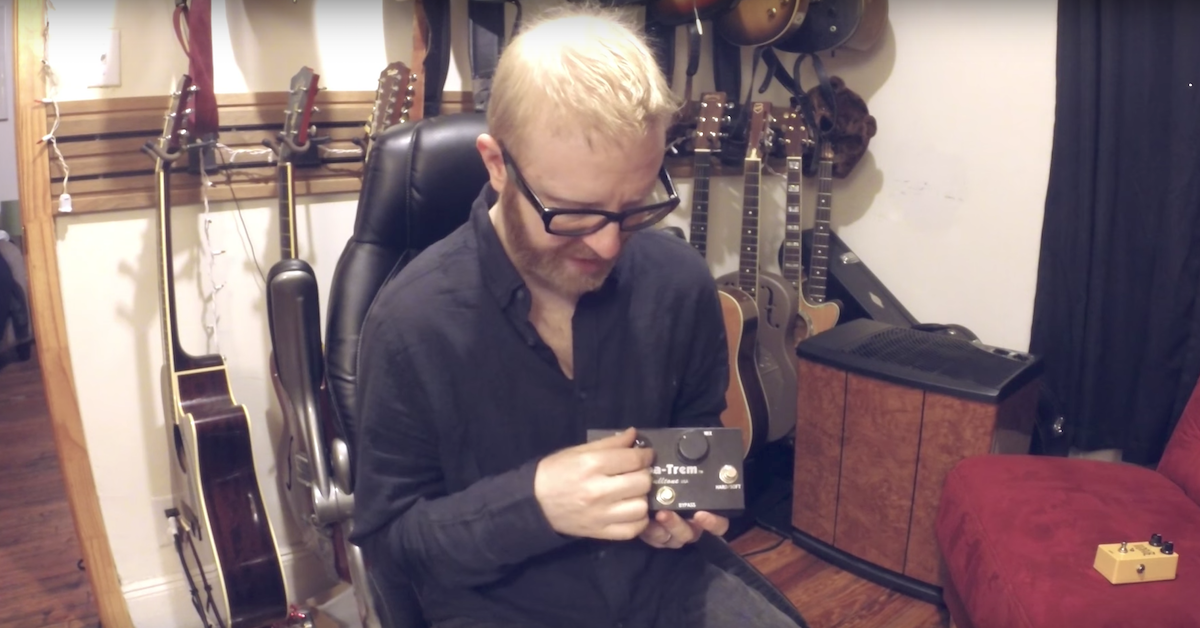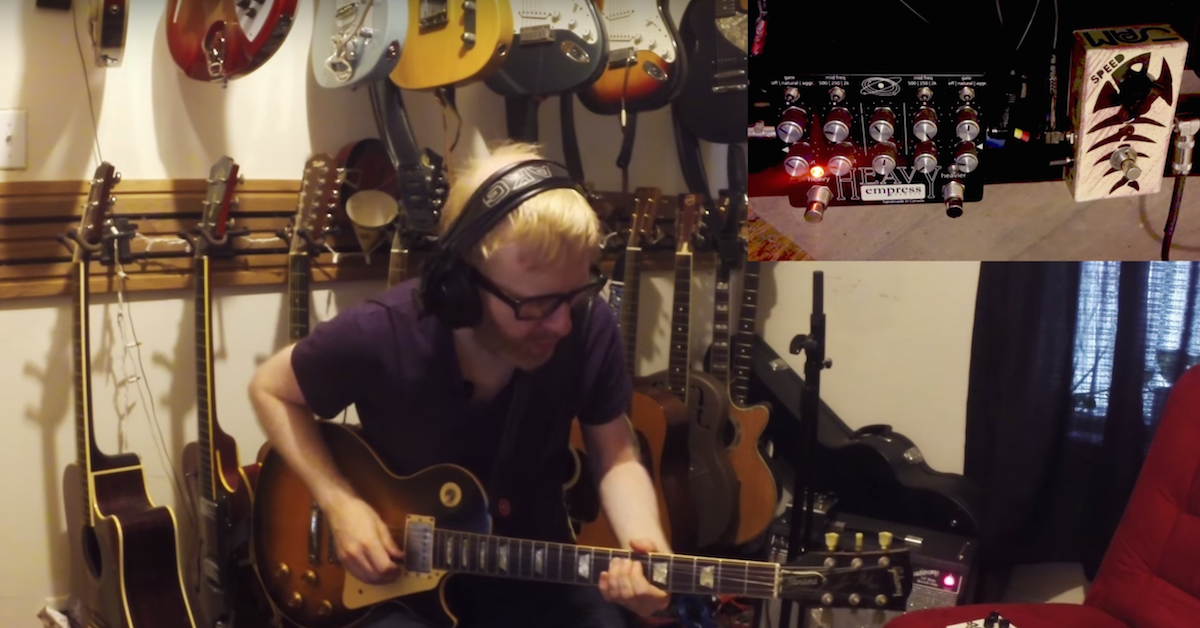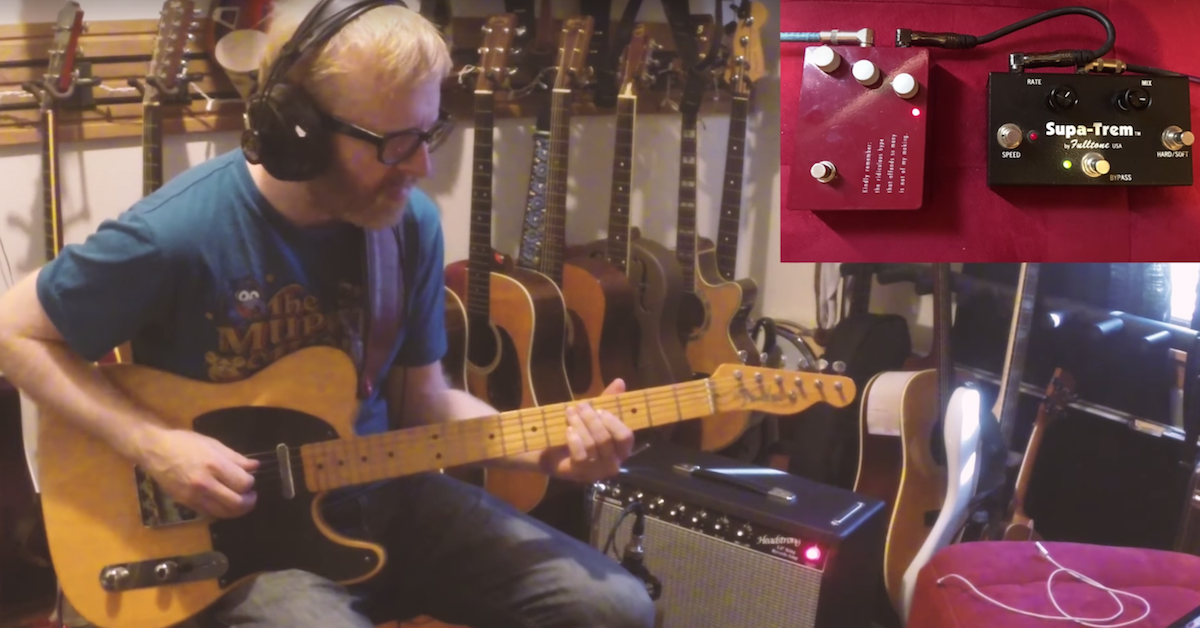The Anatomy of Mick Ronson’s Guitar Tone
Article Content
Mick Ronson is one of my favorite guitarists. Although he’s not a household name like Gilmore or Hendrix, I would argue his influence runs nearly as deep.
Ronson worked on five seminal albums with David Bowie. He also played on Lou Reed’s Transformer album, on which he’s also credited for production and arranging (strings).
Many of Bowie’s most recognized songs are dressed with the tones of Mick Ronson.
Mick’s playing had so much personality. “Expressive” and “Melodic” are words I would use to describe his style. He seemed to create parts from the perspective of a producer and a composer. This makes sense, as Mick went on to co-write songs like John Mellencamp’s Jack and Diane.
When it comes to guitar tone, Mick had a few very specific and incredibly important tools. And during his career he never strayed too far from his selected tools.
Amps
Mick was very aggressive with his amp which was an important part of his sound. He certainly wasn’t gentle with volume and his amp sounded like it was going to explode.
For Bowie’s live shows, Mick used Marshall amps. It’s been said that he favored Marshall Major heads. These were 200-watt amps with KT88 output tubes. Yikes! Talk about the power of the force. They apparently nicknamed his Marshall Major and large cabs “The Pig.”
In the studio, Mick used a variety of amps. Some of the cuts on Bowie’s Aladdin Sane album were recorded at various studios in London, New York and Nashville. The guitar tone on Panic in Detroit was actually a smaller amp than “The Pig”.
Interestingly enough, Mick still always sounded like Mick. He approached amps the same — whether he was using a small Fender amp or a full stack of Marshalls. The character changed a little, but his voice came through loud and clear. You will notice this by looking up YouTube clips of him playing in the ’80s.
Guitar
Mick used a 1968 Gibson Les Paul Custom and he had the finish stripped off the body. He believed it allowed the guitar to resonate more.
He also removed the pickup covers from the stock humbuckers. This often results in more volume and a more aggressive tone.
I recommend not removing humbucker covers on your own. If they’re not removed properly, they can be ruined. And be especially careful with vintage pickups. I don’t think this is a make-it-or-break-it move to get this tone.
I recorded the examples below using a 1990 Les Paul Standard that has been wired to 1950s specs. I’m also using Florance PAF humbuckers, which sound incredibly close to old PAF pickups. And it has NOS capacitors (caps). I’ve taken some time to get this guitar to vintage specs.
Effects
Mick was a man of few effects. Mind you, there weren’t a lot of effects available in that early Bowie period. But even through the ‘80s, Mick still used only a few trusted tone boxes.
Fuzz
Mick used a rare fuzz pedal he bought secondhand that originally belonged to Pete Townsend. It was a Sola Sound Tone Bender MKI. It has often been mistaken for an American-made Tone Bender. But it is not.
The Tone Bender MKI was one of the earliest fuzz pedals ever made, preceded only by the Maestro FZ-1, whose tone we know from the Rolling Stones’ “Satisfaction”.
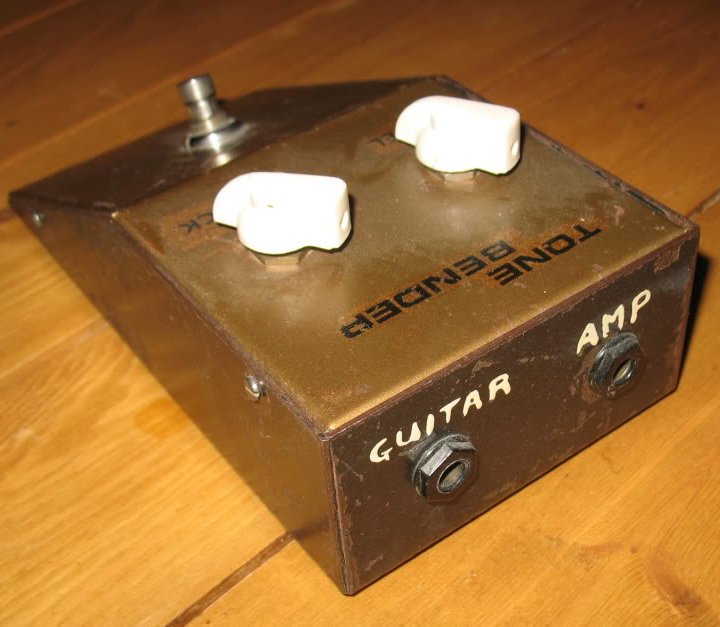
The Tone Bender MKI
There were only about 1,000 MKIs (pronounced “mark one”) made. They’re a bit of a cranky circuit to make, even though it seems like overall such a simple design. It doesn’t have nearly as many components as other fuzz circuits.
A pedal with minimal parts is very exposed. MKI Tone Benders are time-consuming to make and very dependent on the person making them. They need to be tuned. Chris Kyriakos from LIC pedals makes various Tone Bender circuits. He’s talked to me a lot about how needy the MKI circuit is.
Because of this, Sola Sound didn’t produce many units. They quickly moved on to the MKII circuit, which was much easier to assemble and less fidgety.
There is something special about the MKI circuit, though. It’s the rowdy older brother. It’s aggressive and super responsive. It can sing and have gobs of sustain or it can gate a note. The pedal itself becomes an instrument. It’s a germanium-based circuit; raw and unapologetic.
Part of the MK1’s charm is when it’s used with a juiced amp. Even when Mick was using the MKI, it wasn’t into a perfectly clean amp. It’s like cascading pedals, but with the amp as a gain pedal. Fuzz before other stages of gain. Just like with the wah-wah. Which leads me to …
Wah
Mick Ronson was the first player I knew who used a cocked wah. What is a cocked wah? It’s when you turn the wah-wah pedal on, sweep it until you find a spot where the wah sounds best (or induces feedback), and leave it parked there. Others call it a parked wah.
The wah acts as a midrange boost and can really make your guitar sing. Mick used his wah more this way than the traditional way.
You can do this with any wah, but Fulltone now makes a cocked wah pedal called the WahFull. It allows you to use a knob to set the parked frequency. When you turn the pedal on, it’s exactly at the boost location you want, without you having to search for it.
You will recognize this cocked wah tone on many Bowie tracks from this period. Mick used it on rhythm and leads quite often.
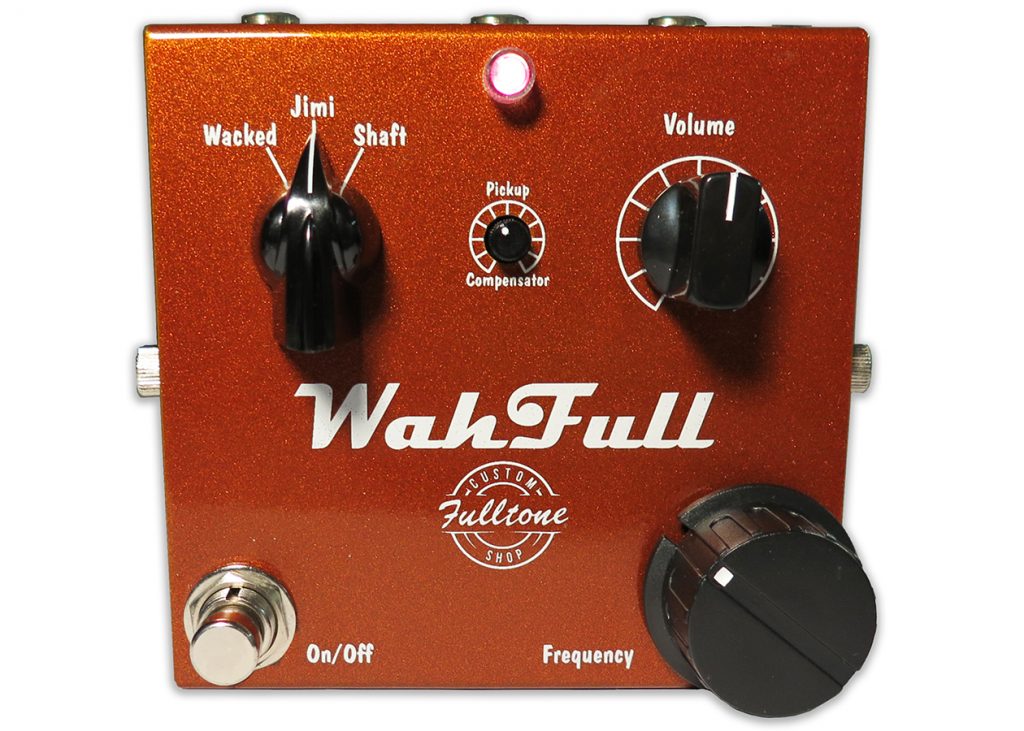
Fulltone WahFull
Echoplex
In some live performances from the Ziggy Stardust tour you can hear Mick use a Maestro Echoplex. Later in his career Mick used a Roland Space Echo, not only for the echo but also as a preamp to push his amp harder.
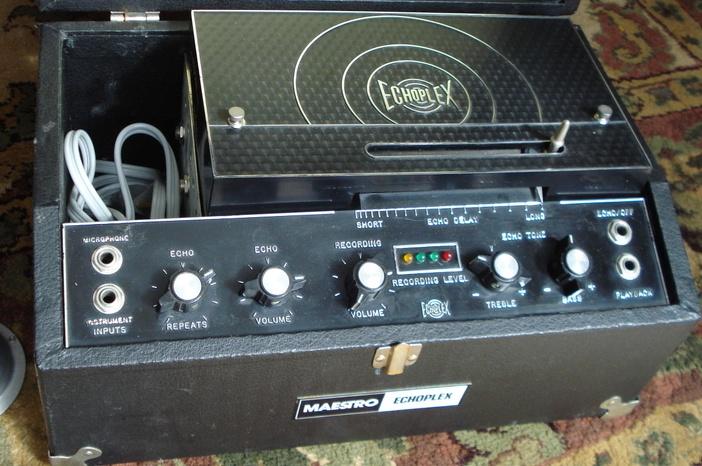
Maestro Echoplex EP-4
Those are the basic ingredients to the Mick tone pantry during the Bowie years. How do we get that tone today?
It’s important to say that it’s impossible to sound exactly like someone else. Even if you had his rig it would sound different in your hands. That said, I think we can be inspired by some of the tonal choices he made and infuse them into our own music. Even without the same gear, we can capture some of the tonal character that made those recordings so special.
Deal Breakers
The two most important elements in our signal chain are going to be the guitar and wah, and I think a Les Paul is an absolute must.
There really is no mistaking the character of that guitar on those records. It’s married to the music.
As I mentioned, the cocked wah is another vital ingredient. These two pieces of equipment followed him around no matter where the sessions were. So although the amp may have changed from time to time, the Les Paul and the wah were bonded to the project.
Favorable Options
Even though a few different amps were likely used on sessions, I still prefer the sound of a Marshall-style amp with a closed-back cab. The closed-back cab naturally creates some of that midrange bump that works so well with a Les Paul. I like the cabs to be loaded with Celestion Greenback 25s.
I would avoid Marshall JCM800, JCM900, DSL200, etc. We’re looking for an old-school Plexi vibe here. As with Fender amps, Marshall amps can sound quite different from decade to decade.
Tweed Fender amps also work well. When I say tweed, though, I don’t mean tweed-covered Blues Deville and other modern Fender amps.
I’m talking old-school tweed amps like the Deluxe, Pro, Bandmaster, Bassman or even the Champ — with 1950s circuits.
Lastly, there really is no substitute for a Tone Bender MKI. Nothing sounds like it. Mick used his a lot during live shows. Fuzz isn’t just fuzz. Especially when it comes to this circuit.
I’ve been using the LIC Pedals MKI. It’s a little more gain than the traditional MKI, but it’s the real deal, including NOS transistors. (Side note: Not all companies that claim to use NOS parts actually do. Be wary of British Pedal Company.)
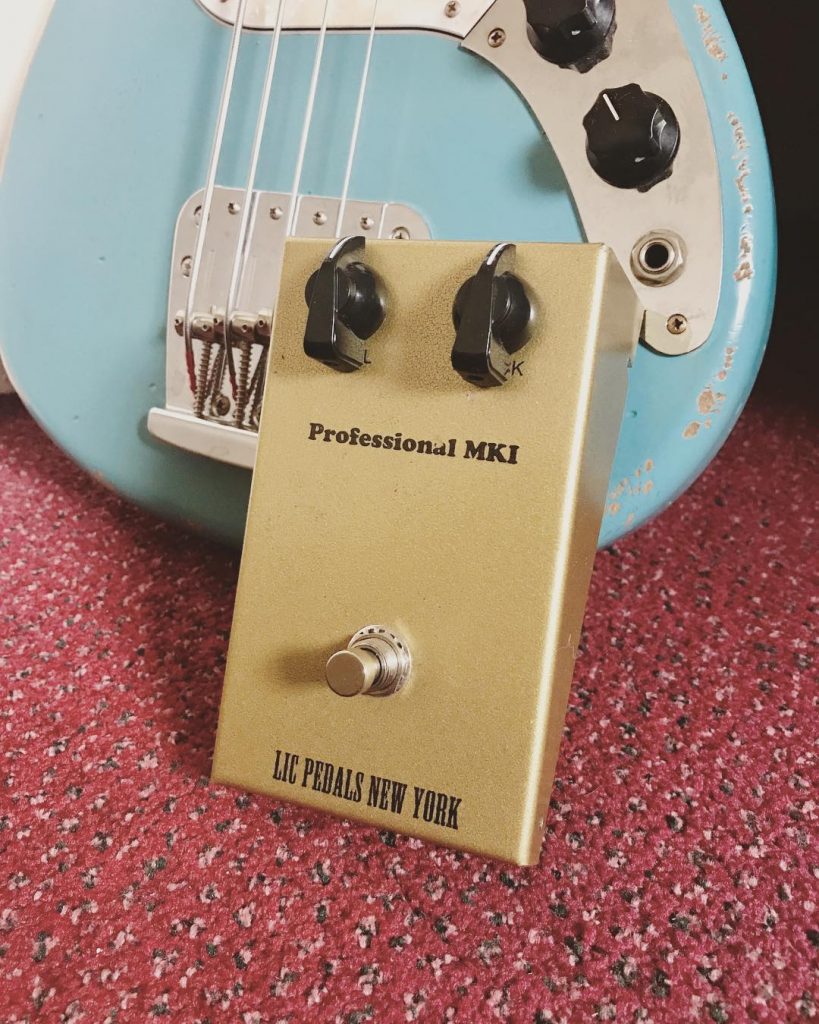
LIC Pedals MKI
Path
I ran my Les Paul into a ZVEX Nano Head. It’s a 1-watt mini tube amp. I wanted to use an amp that would be friendly to those living in environments that don’t allow a 20-watt, much less a 100-watt amp to open up.
Even though it’s just a little 1-watt head, the Nano Head does have some Marshall mojo to it.
I ran the Nano into a closed-back 2×12 cab loaded with Greenback 25s and recorded the cab with an AEA A840 ribbon mic into a UAD Apollo using the UAD Helios channel strip. I’m going pretty old school here all around.
The mic was placed back a few inches from the cab. For tones of this time period I don’t place mics directly on the speaker — try 3 to 6 inches away.
I also find the UAD Studer A-800 tape plugin to be important. Tape just makes guitars sound better. Especially when it comes to vintage tones. But even modern tones, too.
Side Notes
I would get as close to running the guitar straight into amp as possible, with the exception of the wah and Tone Bender. Don’t run through any pedalboards or buffers.
Simplicity is key here. You don’t want anything weighing down your tone.
Outside the Box
You could try experimenting with a treble booster such as the Analog Man Beano Boost. Although Mick Ronson didn’t use a treble booster, it can induce some great cutting midrange into your tone.
A treble booster (Rangemaster circuit) into a Marshall-style amp and closed-back cab will get you quite a bit of “honk.”
Examples
Here are some attempts toward a Ronson tone.
Example 1: Using the Fulltone WahFull
Listen to me turn the WahFull on and off to get a sense of the character it adds to the amp’s tonality.
—
Example 2: I’ve added a lot of reverb and WahFull for a hint of “Moonage Daydream.”
—
Example 3: I move around the boosted midrange frequency spectrum on this one, so you can hear the variety.
—
Example 4: More of the same, but with lead lines.
—
Example 5: I’m using a treble booster here to get some midrange push. It’s not as extreme as using the WahFull, but it’s still effective. As the clip progresses, you’ll hear me rolling back my volume knob.
—
Example 6: This example uses the LIC Pedals MKI Tone Bender. The LIC is a little more high-gain than Ronson’s, but it has the same character.
—
Example 7: The MKI Tone Bender again, but with the gain increased by turning up the guitar volume knob. It was rolled back a bit on example 6.
Summary
I hope this journey has brought you closer to the ideal Ronson glam tone. You just have to remember that it’s not just about the gear but how you manipulate it. Mick spent a lot of time with his rig. He knew it inside and out and could squeeze every little bit of tone out of it.
I suggest you spend some time with each one of these methods and tools and take note of how it changes your playing. What does it emphasize? What does it highlight?
Guitar tones are all about dressing an emotion that you’re playing on the instrument.




